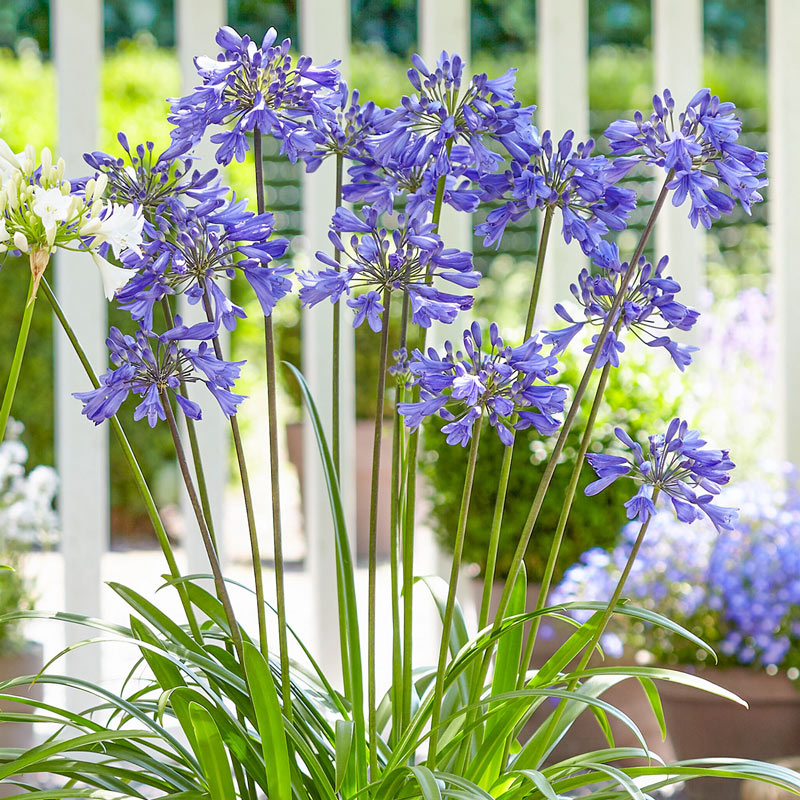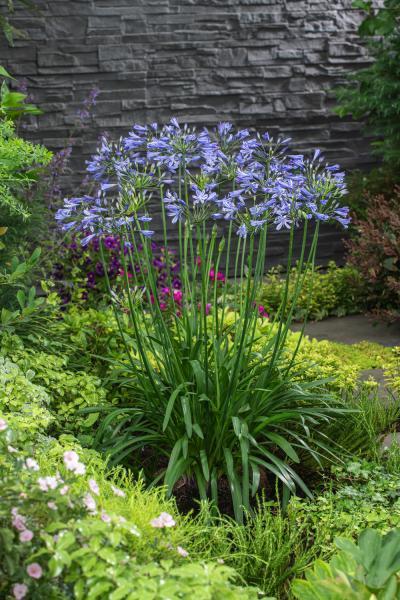Seasonal Agapanthus Treatment: Getting Ready For Winter and Summertime
Seasonal Agapanthus Treatment: Getting Ready For Winter and Summertime
Blog Article
Releasing the Secret to Effective Agapanthus Cultivation: Advice for a Flourishing Yard
In the realm of gardening, cultivating agapanthus efficiently needs a tactical technique that encompasses different elements of plant care. With careful interest to detail, one can unlock the keys to supporting these spectacular blossoms, leading to a garden that thrives with appeal and vibrancy. By recognizing the nuances of agapanthus cultivation, one can create a setting where these plants flourish and flower generously. In the following conversation, we will explore essential tips and techniques that will certainly guide you towards a growing agapanthus yard, using insights into ideal methods, dirt conditions, sprinkling methods, and a lot more.
Growing Agapanthus: Finest Practices
When growing Agapanthus, correct soil preparation is important for making sure successful development and advancement of these attractive flowers. Agapanthus, commonly referred to as Lily of the Nile or African lily, thrives in well-draining dirt with a slightly acidic to neutral pH degree - Agapanthus. Prior to planting, it is critical to amend hefty clay soils with raw material such as garden compost or peat moss to improve water drainage and give crucial nutrients for the plants
To grow Agapanthus, select a place that gets complete sunshine to partial shade, as this will advertise healthy development and bountiful blooming. Dig a hole two times the diameter of the plant's root ball and position the Agapanthus at the very same depth it was formerly growing. Delicately backfill the opening with soil, pushing down strongly to get rid of any type of air pockets around the origins.
Water the recently grown Agapanthus extensively and remain to maintain the dirt equally wet, especially throughout the plant's energetic expanding period. Agapanthus. Using a balanced plant food once a month can further sustain the plant's growth and blooming. By adhering to these finest practices for growing Agapanthus, you can create a spectacular display of these exciting flowers in your yard
Perfect Dirt Conditions for Agapanthus
For optimal development and growing success of Agapanthus plants, making sure the soil problems are perfect is crucial. Agapanthus grows in well-draining soil with a slightly acidic to neutral pH level ranging from 6.0 to 7.0. This kind of dirt permits appropriate water drainage, preventing waterlogging which can bring about root rot. To boost dirt drain, take into consideration including organic matter such as compost or peat moss when preparing the growing website. Additionally, Agapanthus favors soil that is abundant in nutrients, so including a well balanced fertilizer throughout the growing season can advertise healthy development and vivid flowers.

Watering and Feeding Tips
To make certain healthy growth and vibrant flowers, proper watering and feeding techniques are necessary for successful go to this website Agapanthus growing. Agapanthus plants benefit from normal watering, especially throughout the growing period.
When it involves fertilizing Agapanthus, a well balanced plant food with equivalent parts nitrogen, phosphorus, and potassium can be applied in the springtime to advertise healthy and balanced growth and flowering. Slow-release fertilizers are suitable for giving nutrients gradually over a prolonged duration. Prevent over-fertilizing, as this can lead to extreme foliage growth at the cost of flowers.
In addition, incorporating raw material like compost right into the soil can enhance nutrient degrees and boost soil structure, assisting in the overall health of the Agapanthus plants. By adhering to these watering and fertilizing suggestions, gardeners can ensure their Agapanthus plants prosper and produce stunning displays of flowers.
Pruning and Deadheading Strategies
Appropriate trimming and deadheading methods play a crucial role in keeping the health and wellness and visual appeals of Agapanthus plants, matching the important methods of watering and fertilizing for successful growing. Trimming Agapanthus entails removing spent blossom heads, dead or yellowing fallen leaves, and total shaping of the plant to promote much better growth. Deadheading, the process of removing faded flowers, not only enhances the plant's appearance however likewise encourages further growing.
When deadheading Agapanthus, it is a good idea to snip off the flower stem at the base utilizing sharp, clean shears. This procedure reroutes the plant's power from seed manufacturing back into root and foliage development, promoting a much healthier and much more durable plant. Regular deadheading can extend the blooming period of Agapanthus and resource stop self-seeding, which can cause congestion.
In regards to pruning, Agapanthus generally gain from a light trim after flowering to clean up the plant and motivate fresh development. Reducing the spent blossom stems and eliminating any broken or dead foliage helps keep the plant's vitality and general appearance. However, it is necessary to prevent reducing into the crown of the plant, as this can deteriorate its wellness.

Protecting Agapanthus From Vermins and Diseases
Implementing efficient parasite and condition administration strategies is important to guarding the health and wellness and vigor of Agapanthus plants in farming. Agapanthus are generally sturdy plants, but they can still come down with different bugs and diseases otherwise properly cared check that for. One common parasite that impacts Agapanthus is the Agapanthus borer, a caterpillar that tunnels right into the plant, causing damages to the flowers and fallen leaves. To avoid problems, normal examination of the plants is vital. If borers are spotted, they can be by hand removed, or insecticidal soap can be used as a control measure.
In enhancement to pests, Agapanthus are at risk to diseases such as root rot and fungal fallen leave spots. By staying alert and attending to parasite and disease issues immediately, garden enthusiasts can assist their Agapanthus flourish and thrive.

Final Thought
In conclusion, successful growing of agapanthus requires appropriate growing methods, suitable dirt problems, ample watering and fertilizing, normal pruning and deadheading, and security from conditions and parasites. By adhering to these suggestions and tricks, garden enthusiasts can make certain a growing garden loaded with stunning agapanthus blooms. Agapanthus. Keep in mind to preserve regular care and focus to information to promote the health and durability of these magnificent plants
When growing Agapanthus, appropriate soil prep work is essential for making sure successful development and development of these lovely blossoms.Water the newly grown Agapanthus completely and continue to keep the soil equally moist, especially throughout the plant's active growing season.For ideal development and flowering success of Agapanthus plants, making certain the dirt conditions are perfect is critical. When hair transplanting or planting Agapanthus, guarantee the dirt is well-prepared to give the necessary foundation for the plants to establish themselves successfully. One usual bug that influences Agapanthus is the Agapanthus borer, a caterpillar that tunnels into the plant, causing damage to the blossoms and leaves.
Report this page